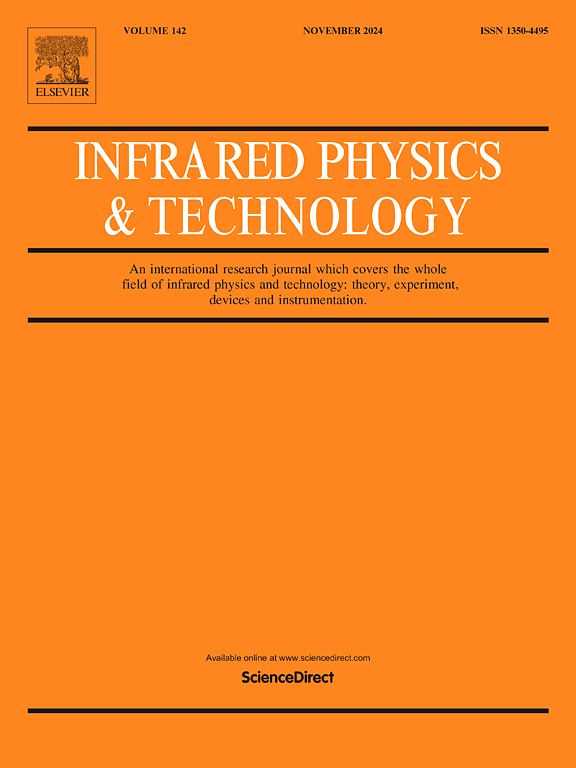中红外激光吸收法测量CH4/NH3燃烧废气中NH3的排放
IF 3.1
3区 物理与天体物理
Q2 INSTRUMENTS & INSTRUMENTATION
引用次数: 0
摘要
氨是一种很有前途的零碳燃料,近年来受到了广泛关注。然而,由于其反应性弱,含NH3火焰的燃烧不稳定性严重,导致废气中有大量的NH3排放。为了量化NH3的排放,必须开发可靠、高效的诊断方法。研制了一种基于可调谐二极管激光吸收光谱(TDLAS)技术的中红外高灵敏度激光测量系统,用于检测NH3/CH4涡流燃烧中NH3的排放。利用量子级联激光器(qcl),结合直接吸收光谱和高温气体电池,检测了中心为1103.45 cm−1的NH3的最佳吸收特征。首先,对测量系统的性能进行了评价。结果表明,该方法的最大相对误差小于5%,测量精度为2.3%。最佳积分时间为49 s时,最小检出限(MDL)为4.27 ppm。随后,将该测量系统应用于旋涡CH4/NH3共燃火焰废气中NH3排放的检测。成功地识别了NH3的排放,在目前条件下最小为26 ppm,最大为738 ppm。同时,NH3排放量随燃料氨分数和当量比的增加而迅速增加。为氨燃烧过程中NH3排放的监测提供了一种有效的手段。本文章由计算机程序翻译,如有差异,请以英文原文为准。
Measurement of NH3 emission in CH4/NH3 combustion exhaust gas with the mid-infrared laser absorption
Ammonia is a promising zero-carbon fuel that has received widespread attention in recent years. However, owing to its weak reactivity, the NH3-containing flame suffers from severe combustion instability, leading to large amounts of NH3 emission in exhaust gas. In order to quantify the NH3 emission, reliable and efficient diagnostic has to be developed. In this work, a mid-infrared high-sensitivity laser measurement system based on Tunable Diode Laser Absorption Spectroscopy (TDLAS) technology was developed for detecting NH3 emission of NH3/CH4 swirl combustion. Quantum cascade lasers (QCLs) is used to detect the optimal absorption features of NH3 centered at 1103.45 cm−1, combining with the direct absorption spectroscopy and a high temperature gas cell. Firstly, the performances of the measurement system was evaluated. The results show that the maximum relative error is less than 5 % and the measurement precision is 2.3 %. The minimum detection limit (MDL) at the optimal integration time of 49 s reaches 4.27 ppm. Subsequently, the measurement system was applied to detect NH3 emission in exhaust gas of a swirl CH4/NH3 co-firing flame. The NH3 emission were successfully discerned, with a minimum of 26 ppm and a maximum of 738 ppm under present conditions. Meanwhile, it is found that NH3 emission rapidly increases with the increasing ammonia fraction in fuel and equivalence ratio, respectively. This work makes an effort to provide an effective means to monitor the NH3 emission for ammonia combustion.
求助全文
通过发布文献求助,成功后即可免费获取论文全文。
去求助
来源期刊
CiteScore
5.70
自引率
12.10%
发文量
400
审稿时长
67 days
期刊介绍:
The Journal covers the entire field of infrared physics and technology: theory, experiment, application, devices and instrumentation. Infrared'' is defined as covering the near, mid and far infrared (terahertz) regions from 0.75um (750nm) to 1mm (300GHz.) Submissions in the 300GHz to 100GHz region may be accepted at the editors discretion if their content is relevant to shorter wavelengths. Submissions must be primarily concerned with and directly relevant to this spectral region.
Its core topics can be summarized as the generation, propagation and detection, of infrared radiation; the associated optics, materials and devices; and its use in all fields of science, industry, engineering and medicine.
Infrared techniques occur in many different fields, notably spectroscopy and interferometry; material characterization and processing; atmospheric physics, astronomy and space research. Scientific aspects include lasers, quantum optics, quantum electronics, image processing and semiconductor physics. Some important applications are medical diagnostics and treatment, industrial inspection and environmental monitoring.

 求助内容:
求助内容: 应助结果提醒方式:
应助结果提醒方式:


